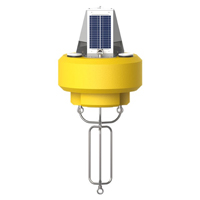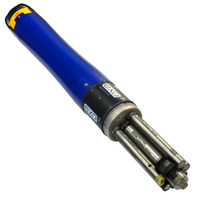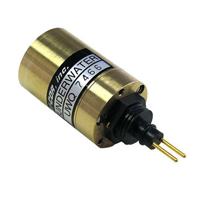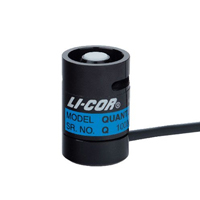
In recent years, freshwater lakes in Maine have become threatened by the changing climate, changes in water quality, increases in harmful algal bloom frequency and severity, and the spread of invasive flora and fauna. In order to protect lake resources, various interest groups have stepped forward to provide data that inform environmental policy and lead initiatives that promote lake health.
For more than 50 years, the Lakes Environmental Association (LEA) in Maine has been working locally on lake water quality, watershed protection, conservation, education, invasive species, and other issues. A team of full-time and seasonal LEA staff, including Research Director Dr. Ben Peierls, monitor lake conditions, collect water samples, conduct laboratory analyses, and analyze the data needed to characterize water quality conditions and trends and inform management.
Challenge: Managing an Expansive Program in Maine
Based in Bridgton, Maine, LEA currently monitors 41 lakes in the surrounding six towns with support from membership contributions and other donations. Local volunteers sometimes assist in conducting spot sampling. Even with the extra help, the region is over 200 square miles, and monitoring every lake can be challenging.
 About half of the lakes are monitored biweekly throughout the summer (May through September), and the rest are sampled once a season. While the discrete sampling program works to gather critical data on the lakes, this approach only collects a select number of data points rather than the whole picture of the lake throughout the year.
About half of the lakes are monitored biweekly throughout the summer (May through September), and the rest are sampled once a season. While the discrete sampling program works to gather critical data on the lakes, this approach only collects a select number of data points rather than the whole picture of the lake throughout the year.
Solution: Real-Time Monitoring and Discrete Sampling
In order to gather a more comprehensive image of lake conditions in the region, some of the lakes are monitored with real-time systems. LEA compiles the data collected by the real-time systems and discrete samples to support trend analysis and other research questions.
The goal of the program is to monitor and record current conditions and any long-term changes to the lakes in terms of basic indicators used by the state and nationally for judging lake trophic state. The indicators involve three primary measurements: water clarity, total phosphorus, and chlorophyll.
 LEA also conducts high-frequency data collection using temperature logger arrays (Onset HOBO Pendant Temp/Light Loggers) deployed in over a dozen lakes during the open water season and, in some cases, through the winter. Data from the loggers are collected at the end of the season when the sensors are retrieved for data download.
LEA also conducts high-frequency data collection using temperature logger arrays (Onset HOBO Pendant Temp/Light Loggers) deployed in over a dozen lakes during the open water season and, in some cases, through the winter. Data from the loggers are collected at the end of the season when the sensors are retrieved for data download.
Two automated NexSens CB-450 buoys equipped with X2-CB Data Loggers—one on Highland Lake and the other on Long Lake—collect data every 15 minutes, reporting lake conditions in real-time. Data collected by the integrated In-Situ RDO Blue sensors, Turner Designs Cyclops-7 chlorophyll fluorometers, and LI-COR LI-190 and LI-192 Underwater PAR sensors are pushed to the cloud and stored in the WQData LIVE datacenter.
A nearby, centrally located meteorological system collects weather data for the two lakes and allows LEA to analyze the influence of climate on water quality conditions.
Benefits: A More Detailed Look at Maine Lakes
The data buoys provide a much more detailed image of lake conditions than the discrete sampling program, making trend spotting easier. In addition to monitoring basic parameters, the LEA team is working to study other limnological questions and emerging concerns like phytoplankton community dynamics, toxic algal blooms, fecal source tracking, microplastics, and PFAS.
The combination of real-time monitoring and discrete sampling with a YSI ProSolo handheld ODO/T sensor or EXO2 sonde ensures that each lake under LEA’s supervision has data throughout the year, whether it be high-frequency or more spread out.
The combined approach has also allowed Peierls to develop unique solutions to different problems. While the sensors on the buoy provide a good snapshot of data, they can only monitor the water column at a single site on the lake. To remedy this, Peierls has developed a system that collects data from a moving boat using a YSI EXO2 sonde in a flow-through configuration.
The Bottom Line
 While vertical, horizontal, spatial, and temporal monitoring can all be conducted separately with various innovative pieces of equipment, Peierls has to consider the cost of such instruments and the time staff members take to use and maintain them. Balancing costs with data is a significant part of developing any monitoring system.
While vertical, horizontal, spatial, and temporal monitoring can all be conducted separately with various innovative pieces of equipment, Peierls has to consider the cost of such instruments and the time staff members take to use and maintain them. Balancing costs with data is a significant part of developing any monitoring system.
The combination of buoys and discrete sampling is a cost-effective solution for LEA as their lake region is so large. The buoys provide continuous data, and maintenance is relatively simple, with removal occurring each winter and redeployment in the spring.
The lake monitoring program would not exist without financial support from members, towns, lake associations, and foundations. LEA’s work with state and local agencies is essential to the success of the program—success that can be measured by the impact the data has on resource management, environmental policy, research, and public lake knowledge.
Equipment
The NexSens X2 Environmental Data Logger offers the latest in real-time monitoring technology with wireless communication, large plug-and-play sensor library, and ultra-low power consumption.
The NexSens CB-450 Data Buoy is designed for deployment in lakes, rivers, coastal waters, harbors, estuaries and other freshwater or marine environments.
The YSI EXO represents the next generation of water quality instruments from YSI. The EXO2 sonde includes six sensor ports and a central anti-fouling wiper option.
The LI-COR LI-192 Underwater PAR Sensor Quantum sensor accurately measures photosynthetically active radiation (PAR) in freshwater or saltwater environments.
The LI-190R Quantum Sensor measures photosynthetically active radiation (PAR), which is energy that drives photosynthetic reactions in plants.





